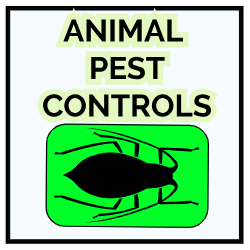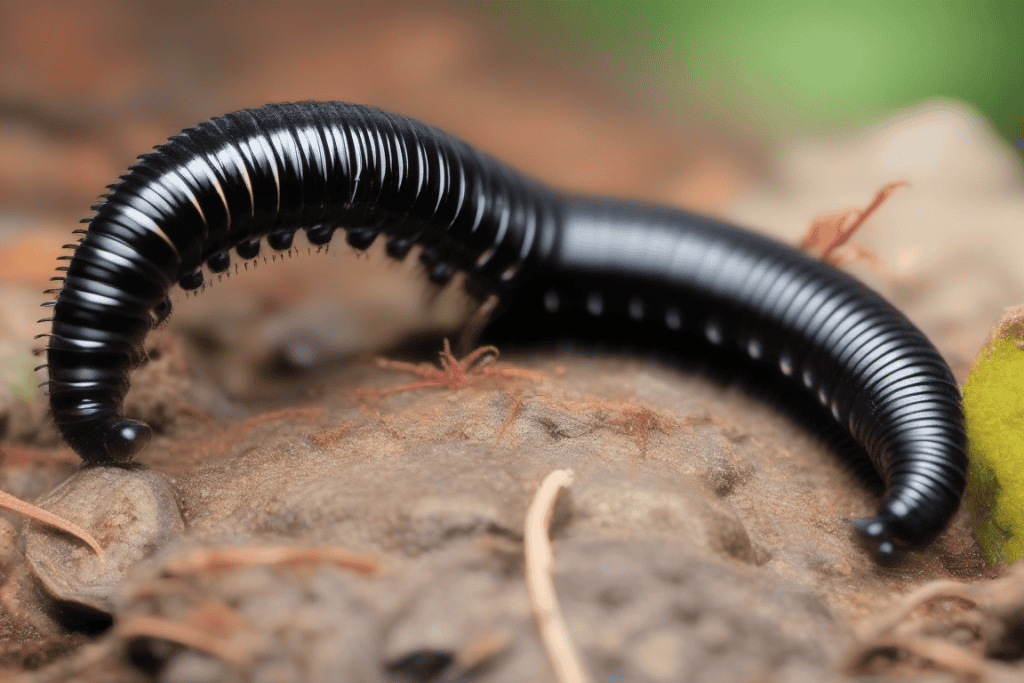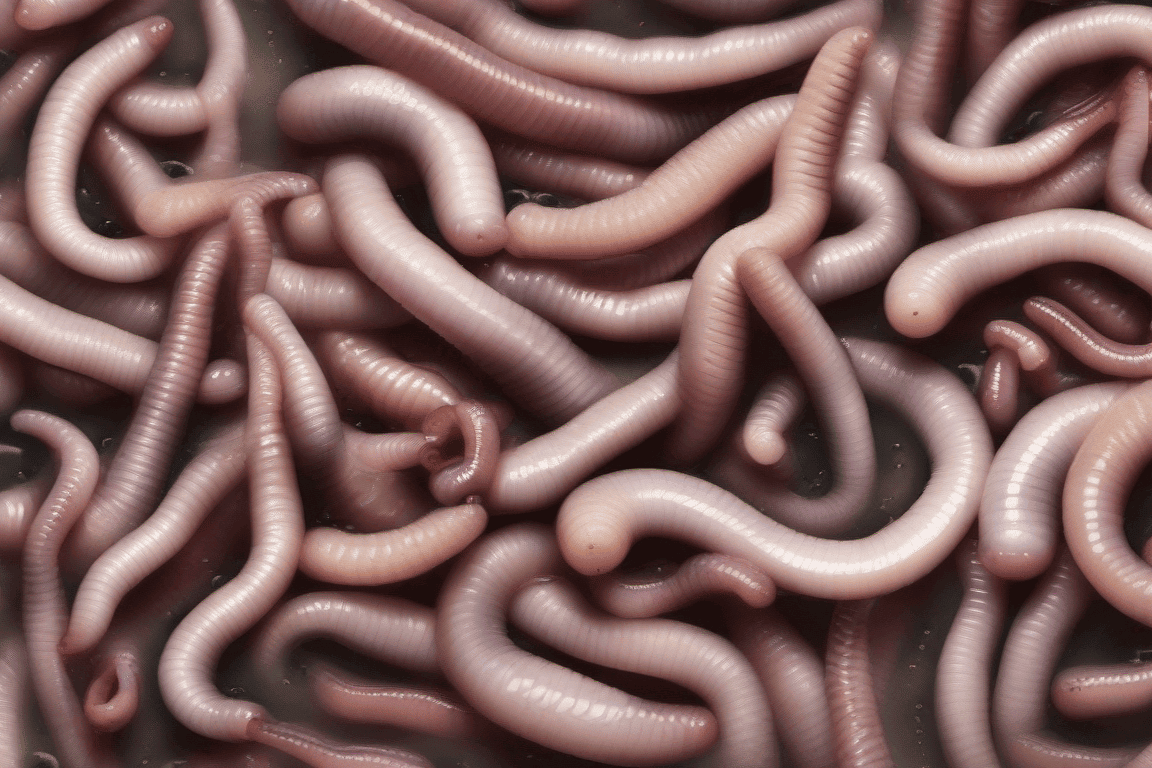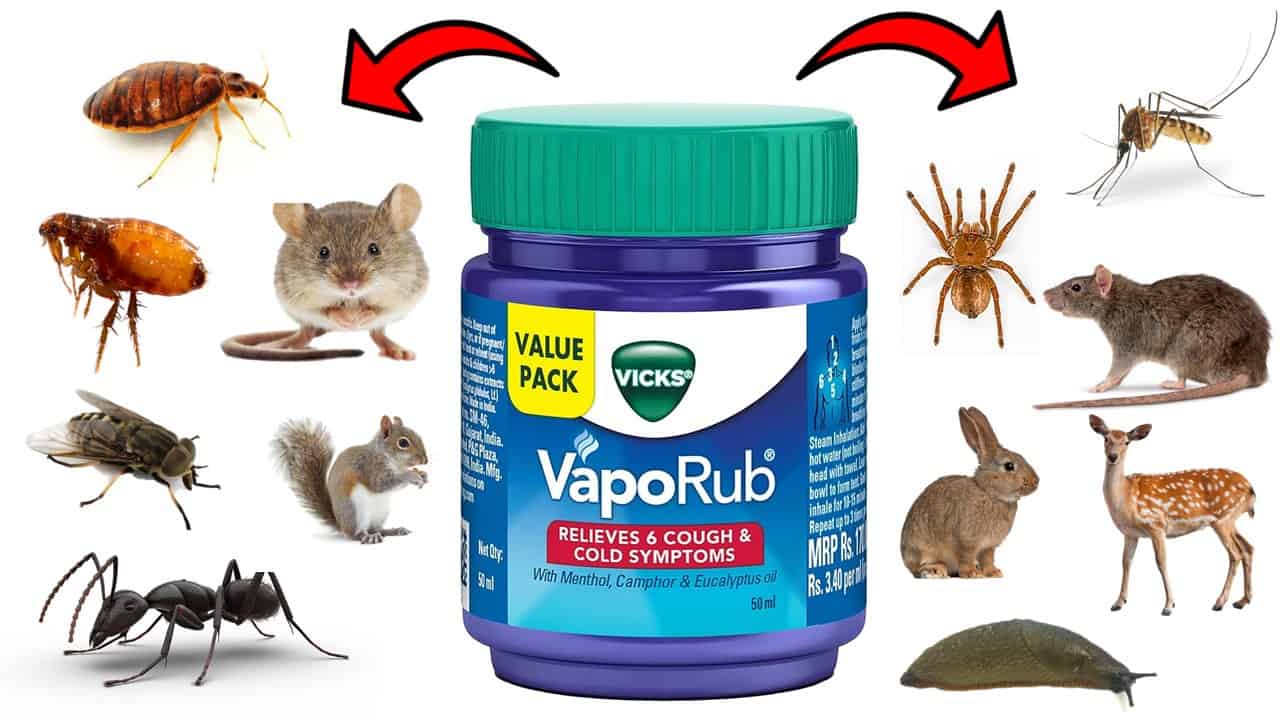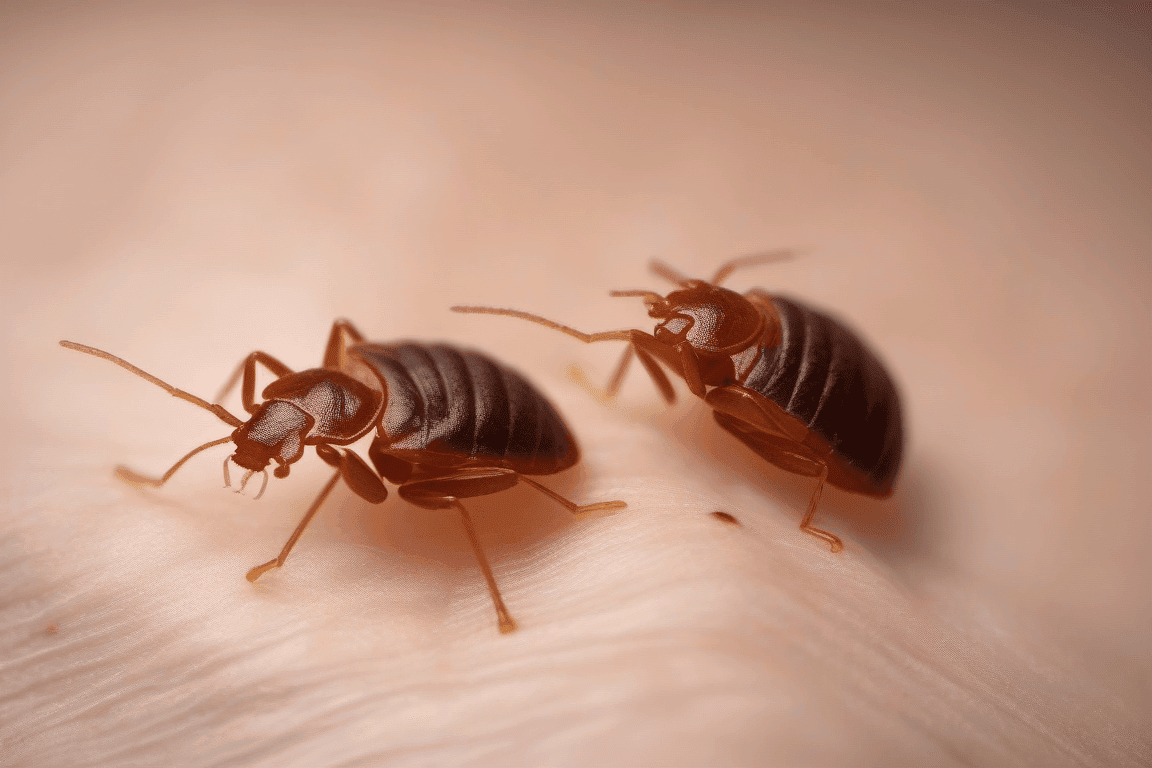Are millipedes invading your sanctuary?
Fear not! We have the ultimate guide to reclaiming your home from these uninvited guests! Join us on an entertaining journey as we reveal foolproof strategies for evicting millipedes from your humble abode once and for all.
From natural remedies to practical solutions, it’s time to show those multi-legged creatures who’s boss! Get ready for some bug-busting action!
Don’t let them take over. Watch now and bid those creepy crawlers farewell!
Table of Contents
What are Millipedes?
Millipedes are elongated arthropods that belong to the class Diplopoda.
They have a distinct appearance that features a long, segmented body. Millipedes can vary in size, with some species reaching lengths up to 12 inches.
Their bodies comprise numerous segments, each containing two pairs of legs, except for the first three segments with only one.
These fascinating creatures have a hard exoskeleton that protects and supports their bodies. The exoskeleton is often dark brown or black, but some species can exhibit vibrant hues such as red or orange. Millipedes have a pair of antennae on their head, which they use to sense their environment.
They are primarily nocturnal creatures and prefer damp and dark areas. They can curl up into a tight spiral when disturbed or threatened as a defense mechanism.
Besides, millipedes are detritivores, implying that they feed on decaying organic matter like leaves and dead plant material. These critters play a significant role in ecosystems by aiding in decomposition processes. However, they can constitute a nuisance around the home.
Millipedes love damp areas because they need moisture and high humidity to survive. These arthropods have a waxy exoskeleton that helps retain water but requires a moist environment to prevent dehydration.
Damp areas provide the ideal conditions for millipedes as they can easily absorb water through their bodies and avoid desiccation. Moreover, millipedes prefer moist areas because it offers them abundant food.
They primarily feed on decaying plant matter, such as leaves or wood, prevalent in wet environments. The humidity in these areas accelerates the decomposition process of organic material, creating a breeding ground for various microorganisms and fungi that serve as food sources for millipedes.
When millipedes find their way into homes, they seek refuge from adverse environmental conditions such as drought or excessive heat outside.
The humid and damp corners of basements, crawlspaces, bathrooms, or kitchens offer them shelter from unfavorable weather conditions while providing the necessary moisture and decaying organic matter to sustain their survival.
What are the Ways to Eliminate Millipedes?
1. Diatomaceous earth
Diatomaceous earth, a natural and non-toxic substance, can eliminate millipedes from your home. We derive it from the fossilized remains of diatoms, an abrasive algae.
When millipedes come into contact with this substance, the sharp edges of the diatoms cut through their exoskeletons, leading to dehydration and death.
Sprinkle a fine layer of the powder around the areas where you have noticed their activity. Focus on entry points like doors, windowsills, or any cracks or crevices they might use to access your home.
Apply it in areas where moisture tends to accumulate as millipedes are attracted to damp environments. Diatomaceous earth needs to remain dry for its insecticidal properties to work.
If it gets wet, its effectiveness decreases significantly. Ensure you reapply after rain or if you notice any signs of moisture buildup in the treated areas.
Besides, take precautions while applying it by wearing gloves and avoiding inhaling it, as prolonged exposure may cause respiratory irritation.
2. Boric acid
Boric acid is a white powder you can purchase at most hardware stores or online. It dehydrates the millipedes, ultimately causing their death.
Sprinkle it around areas where you have noticed millipede activity, such as doorways, windowsills, and baseboards. Use boric acid cautiously, as it can be toxic if ingested or inhaled.
Remember to wear gloves and a mask when handling the powder to avoid any potential skin or respiratory irritation. Besides, keep it out of reach of children and pets.
In addition to its effectiveness in killing millipedes, boric acid can also act as a deterrent for these pests. Millipedes tend to avoid areas treated with boric acid due to its drying effect on their bodies.
Applying small amounts of boric acid around your home’s entry points and problem areas can prevent future infestations and keep your space millipede-free.
3. Wood ash
Wood ash can be a helpful tool in exterminating millipedes in your home.
Millipedes are attracted to moisture and decaying organic matter, so sprinkling wood ash around areas where they are present can deter them. The alkaline nature of wood ash acts as a repellent to these pests, making it difficult for them to survive in treated areas.
In addition, the abrasive texture of wood ash can physically harm millipedes by scratching their exoskeletons, leading to dehydration and demise.
Sprinkle a generous amount around entry points such as windowsills, doorways, and cracks in the foundation. Reapply after rain or heavy moisture, as the effectiveness of the treatment may diminish over time.
While wood ash can be an effective repellent for deterring millipedes, use it cautiously around plants or sensitive areas as it may alter soil pH levels or cause harm. Test a small area before applying wood ash extensively.

4. Cayenne pepper
Cayenne pepper is a natural repellent that can deter millipedes from your home. The pungent smell and taste of cayenne pepper are repulsive to millipedes, making it an effective deterrent.
Sprinkle it around the areas where you notice millipede activity, such as windowsills, doorways, and baseboards. You can create a solution by mixing cayenne pepper with water and spraying it in affected areas.
Besides its repellent properties, cayenne pepper also has another advantage when dealing with millipedes – it acts as a desiccant.
Millipedes require moist environments to survive, so cayenne pepper can help dry out their habitat and make your home less appealing.
Besides, research suggests that the capsaicin in cayenne pepper has insecticidal properties, which may further contribute to eliminating millipedes from your home.
5. Vacuuming
Vacuuming can be highly effective for eliminating millipedes in your home. These tiny arthropods are infamous for their numerous legs and habit of invading houses, especially during wet seasons.
To combat them, start by equipping your vacuum cleaner with an attachment suitable for hard floors and carpets. Begin by vacuuming the affected areas thoroughly, paying close attention to baseboards, corners, and crevices where millipedes tend to hide.
Be sure to remove any debris or clutter that could serve as a hiding spot for these pests. Vacuuming helps eliminate millipedes and prevents them from reproducing.
Empty the contents of your vacuum cleaner immediately after use into a sealed bag or container to prevent any surviving millipedes from escaping back into your home.
Additionally, consider cleaning the filters and attachments of your vacuum cleaner to maintain its efficiency.
6. Raise chickens
Another potential solution for exterminating millipedes in your home is to raise chickens. Chickens are natural predators of many insects, including millipedes.
Allowing chickens to roam freely in your yard can help control the millipede population. Chickens have a keen sense of spotting and hunting down insects, making them an effective method for pest control.
Not only do chickens provide a sustainable and environmentally friendly way to combat millipedes, but they also offer additional benefits.
They produce fresh eggs daily, a valuable food source for you and your family. Moreover, raising chickens can be a rewarding hobby that promotes self-sufficiency and connects you with nature.
7. Seal cracks
An excellent method to prevent millipedes from entering your home is to seal any cracks or gaps in your house exterior. Millipedes can squeeze through even the tiniest openings, so you must inspect your home for potential entry points.
Start by examining the foundation and walls for cracks and crevices. Use a caulking gun to seal up these gaps, ensuring no openings where millipedes can crawl through.
In addition to sealing cracks in the exterior of your home, don’t forget about windows and doors. Check for gaps around window frames and doorways, as these are common entry points for millipedes.
Apply a weatherstrip or use a silicone-based sealant to close off these areas. Besides, you should inspect vents, pipes, and utility lines that lead into your home.
Seal them with appropriate materials, such as mesh screens or foam insulation. Taking the time to cover cracks inside and outside your home can reduce the chances of millipedes finding their way in.
8. Use a dehumidifier
Millipedes thrive in moist environments, so reducing the moisture levels in your house can help discourage their presence. A dehumidifier extracts excess moisture from the air, making it less appealing for millipedes to inhabit.
Maintaining an optimal humidity level between 30% and 50% can create an unattractive environment for millipedes.
This condition will not only help prevent them from entering your home but also deter any existing ones from staying.
Additionally, a dehumidifier can improve indoor air quality by reducing mold and mildew growth, common triggers of respiratory issues such as allergies or asthma.
Place the humidifier in areas where millipedes are present, like basement and crawl spaces, if you want to make the most of it. Ensure these areas are well-ventilated to allow proper air circulation and maximize the device’s effectiveness.
Check and empty the water collection tank to avoid any overflow or leakage that could create new sources of moisture in your home.
9. Regular sanitation involving drying moist areas and removing mulch
A crucial aspect of eliminating millipedes in your home is regular sanitation. This process will dry damp areas and remove mulch.
Millipedes are attracted to wet environments, so you must address any moisture issues in and around your home. Start by inspecting for any sources of moisture, such as leaky pipes or faucets, and repair them promptly.
Additionally, ensure that areas prone to dampness, such as basements or crawl spaces, are well-ventilated and clean to prevent excess moisture buildup.
Another vital step in sanitation is removing mulch from around the home foundation or other areas where millipedes may be present.
Mulch provides an ideal breeding ground for these pests as it retains moisture and provides shelter. Removing this potential habitat can discourage millipedes from congregating near your property.
Conclusion
Millipedes may be unwanted guests in your home.
But with a few simple steps, you can kick them to the curb and regain control of your space.
You can create an unfavorable environment that will send these creepy crawlies running for the hills by eliminating their food sources, sealing cracks and openings, and implementing natural deterrents like diatomaceous earth or boric acid.
Remember to stay vigilant and address any moisture issues or potential entry points to prevent future infestations. So why wait?
Take action today and reclaim your home from these multi-legged invaders!
